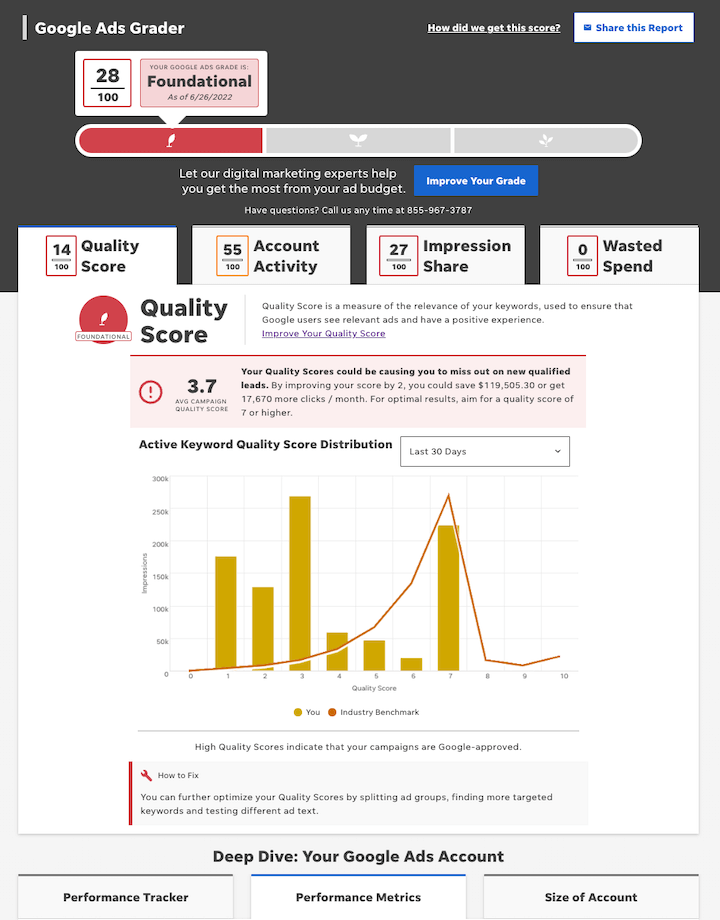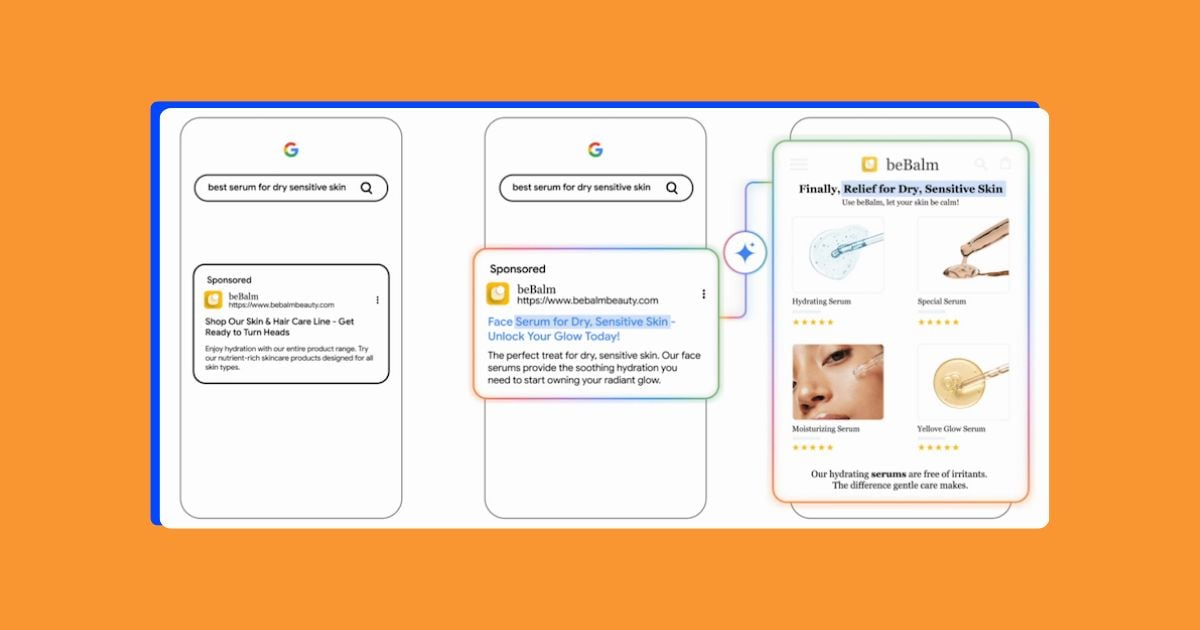I’ve got good news, bad news, and great news.
The good news: Google Ads yields an average ROI of $2 for every $1 spent. Not surprising since 89% of buying journeys begin with a search engine and that for commercial intent queries, 64.6% of the clicks go to paid ads.
The bad news: This is not a secret and everyone wants a piece of the pie. According to Hanapin Marketing, 93% of businesses are allocating budget to search engine marketing, making it the top paid channel.
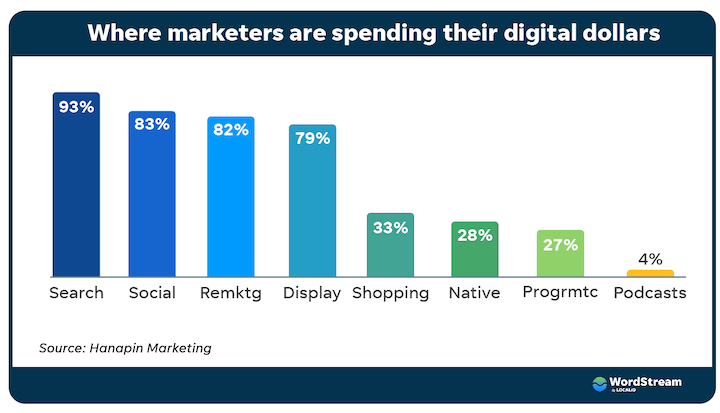
The great news: You don’t necessarily have to keep hiking up your bids to compete in Google Ads. In fact, bidding higher does not guarantee top ranking, nor does it guarantee clicks or that those clicks will convert—and conversions are what matter most.
Read on to learn eight strategies (and 20+ tactics!) to stand out in paid results and see the results you want—without reverting solely to bid-pumping tactics.
Table of contents
- Understand the power of Quality Score
- Increase your click-through rate
- Improve your ad relevance
- Perfect your landing page experience
- Optimize your keywords
- Master your bidding strategy
- Examine your competition
- Use the tools available to you
How to compete in Google Ads without raising your bids
To actually get a leg up on your competitors in Google Ads without raising bids requires a holistic approach. It’s about first understanding how the algorithm works, then creating a strong foundation based on that foundation, and then using the tools and tactics available to you to get ahead. Let’s dive in.
1. Understand the power of Quality Score
With the way the Google Ads auction works, higher quality ads get rewarded with higher positions and lower costs.
Why? Because if Google serves crappy ads, it will lose searchers. And if no one clicks on those ads, Google doesn’t make money.
How? By factoring your Quality Score into the algorithm. Your Ad Rank is your Quality Score multiplied by your maximum bid. Higher Ad Rank = higher position on the SERP. And your cost per click is the Ad Rank of the ad below yours, multiplied by your Quality Score, plus one cent.
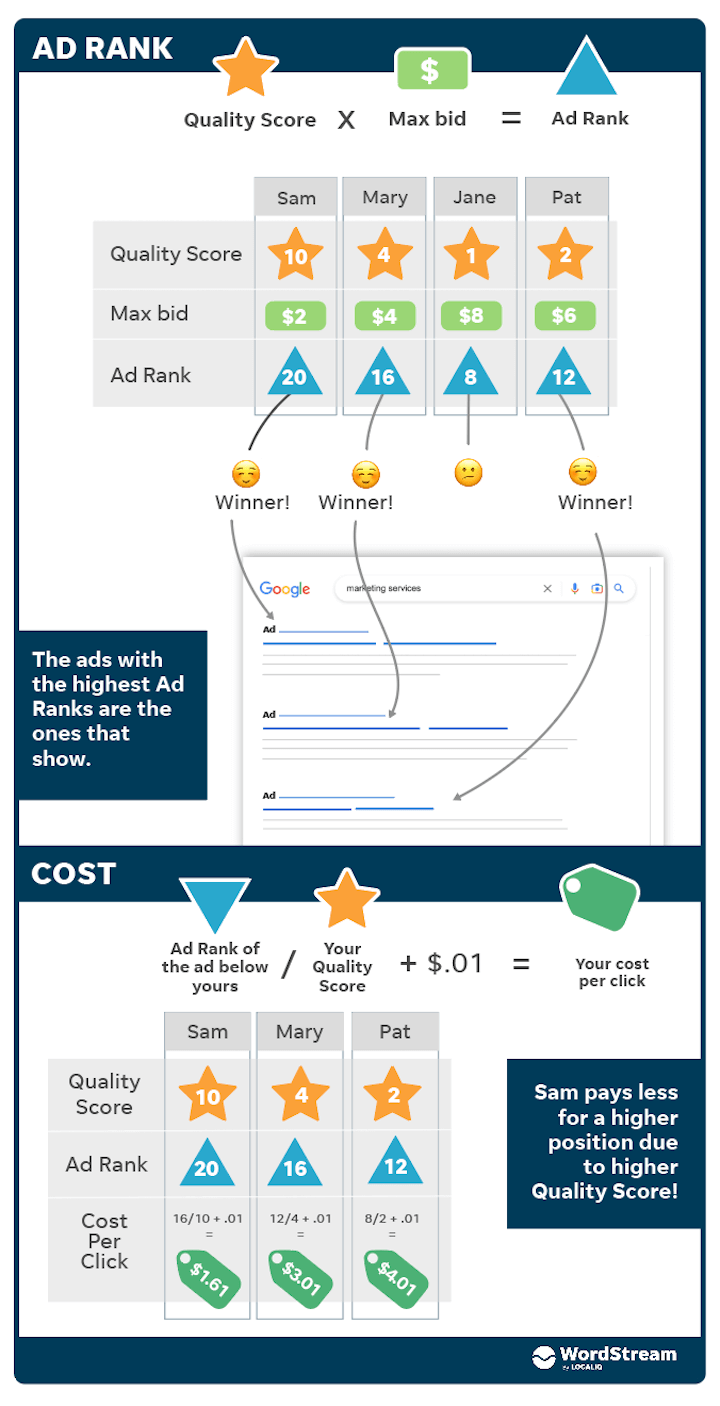
As we see in the example, Sam gets the highest position and pays the lowest CPC even though he has the lowest bid, because of his stellar Quality Score. Jane, on the other hand, has bid the highest but hasn’t made it onto the SERP because of her poor Quality Score.
In short, you can’t just raise your bid if you want to compete in Google Ads. You need to raise your Quality Score. So how do you do that? The three main drivers of Quality Score are click-through rate (CTR), ad relevance, and landing page experience. So the next three tips will cover those.
✴️ How does your Quality Score compare to others in your industry?
Find out instantly with the Free Google Ads Performance Grader.
2. Focus on increasing your click-through rate
A high click-through rate will improve your expected click-through rate, which bring up your Quality Score. Make your ads shine and you’ll outpace your competition and spend less money. Here are just a few of the many ways to increase CTR:
- Differentiate your ad. The offer must stand out from the other ads. Use differentiators to make your offer exciting to potential customers.
- Use numbers in your ads. It’s not a “Huge Sale,” it’s “30% Off Storewide.” Numbers get attention and they sell.
- Use a strong CTA. Convey urgency and reinforce the benefit or feature: “Save 30% Now,” “Start Getting More Customers,” “Order Today.”
- Use extensions: Ad extensions (now called assets) improve your CTR, which in turn improves your Quality Score, which in turn improves your rank.
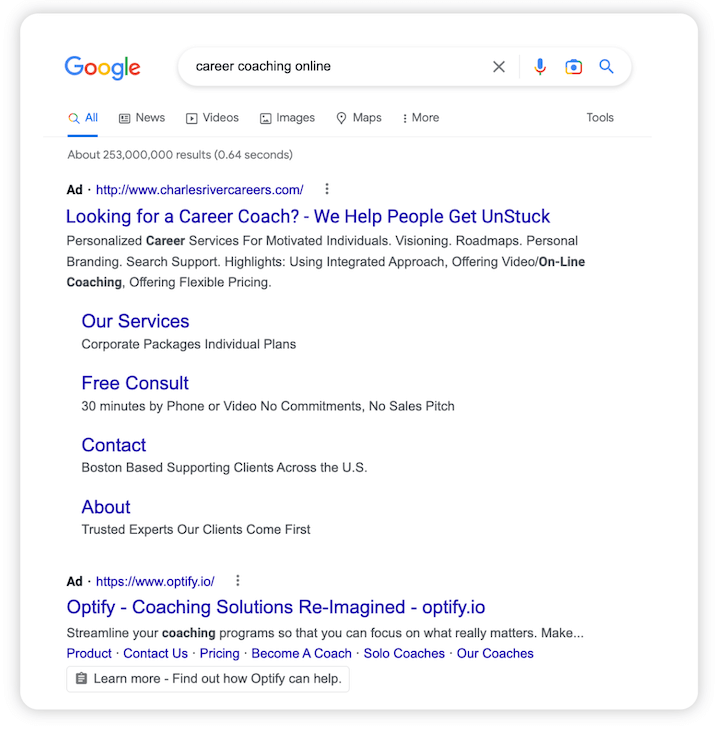
The first ad above has unique copy (“We help people get unstuck”) and sitelink extensions—very clickable.
3. Improve your ad relevance
Relevance has been taken to a whole new level these days. It’s not just about being relevant to the search query, but also to the searcher themself. Here’s how to do that:
- Include the keyword in your headline and description: Google also bolds the query that was searched, which attracts eyeballs and clicks. Here’s an example for “accounting software for small business:”

- Refine your targeting: Use geotargeting to narrow your ads to particular locations and cater your copy to those geos.
- Use audiences: You can use audience targeting on top of keywords in search ads. Use our audience targeting cheat sheet to learn more.
- Adjust for seasonality: Even if you don’t have products and services unique to a holiday or season, you can still tweak your ad copy and landing pages to be in line with them.
- Create tightly-themed ad groups: Solid click-through rates and ad relevancy are best achieved with tightly-themed ad groups. This means having a proper Google Ads account structure, with no more than 20 keywords per ad group. Something like 10 to 15 keywords is best. Yes, it’s more work, but it’s worth it.
4. Perfect your landing page experience
The third piece to the Quality Score puzzle is landing page experience. Even more importantly, the landing page is how you make sure conversions happen, so even if your CTR is great and costs are low, you’re not really competing if you’re not converting. Here’s how to improve your landing page experience and optimize them for conversion:
- Use unique landing pages for each offer: Do not send all of your visitors to your homepage or to a generic landing page. You need a unique landing page for each offer and even each audience.
- Keep it clean and clear: Balance out text with images and keep your text concise: Lead with benefits, support them with features, and use specific CTAs.
- Consistency: The copy, imagery, and messaging in your landing page should be consistent with that of the ad that preceded it.
- Make it easy: The page should load fast, function well on any device, and if it contains a form, not ask for too much information.
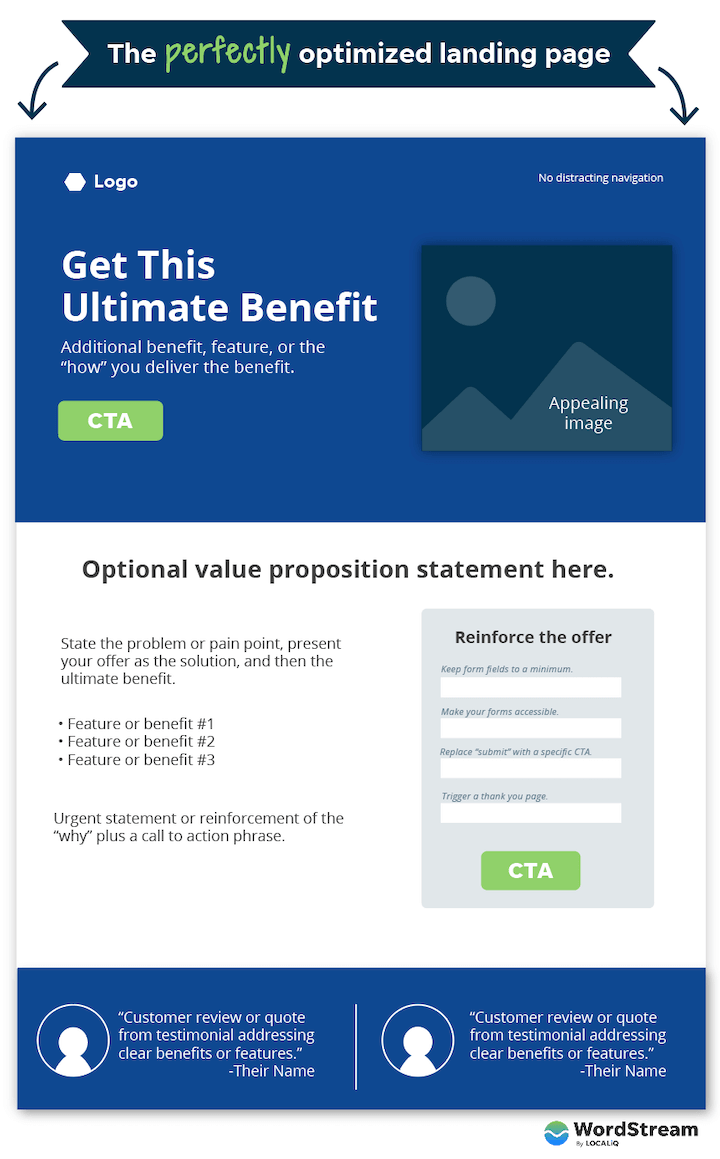
Get more tips in our complete guide to persuasive landing pages.
5. Optimize your keywords
At the heart of a successful Google Ads campaign is the right keywords. But it’s not enough to just do your keyword research, input the list into your campaign, and call it a day. You need to regularly maintain keyword lists and seek out new keywords to target. Here are some of our tips for keyword optimization:
- Use the search terms report: Though it’s gone through some less-than-ideal changes, it’s still the only one we’ve got. Use the search terms report to find the cheaper, higher-converting keywords that have less competition as well as new keywords to bid on. You’ll also find potential negative keywords to add to your campaigns so you’re not wasting money on bad keywords.
- Bid on competitors’ terms: Look at your competitor’s brand terms and consider bidding on them. Chances are they’re already bidding on yours.
- Isolate low Quality Score keywords: Sometimes you’ll have one or two keywords in an ad group that have consistently low Quality Scores no matter what you do. Rather than letting them drag down your ad group and campaign, Remove the ones with low Quality Scores and put them in their own ad group with hyper-focused ads and landing pages. If you can’t get a lift in performance there, you may want to pause or delete them if they’re not valuable enough for your business.

6. Examine your competition
This last one tends to get overlooked. We get so wrapped up in our own metrics that we forget the obvious: Look at your competition. Look at their ads and offers. Ask yourself if you’re truly competitive. If you can’t compete with the offer, make sure your ad copy and extensions improve your “click appeal.”. Appearance, enthusiasm, and words sell!
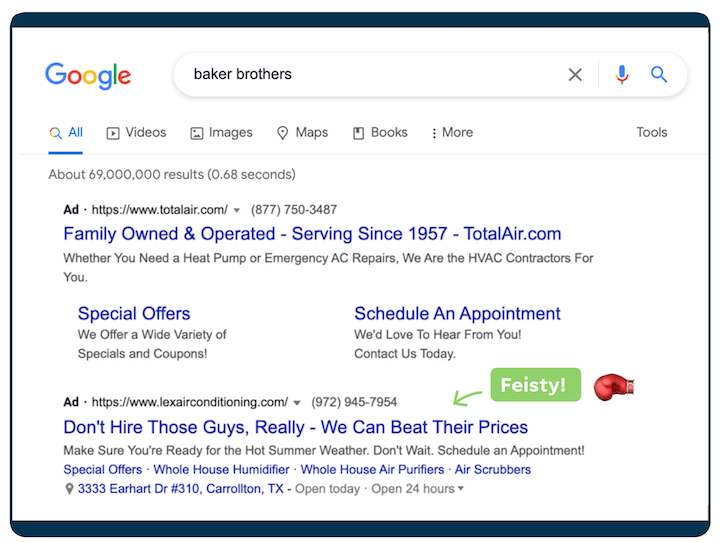
You can find these and plenty more ideas in our roundup of Google Ads examples.
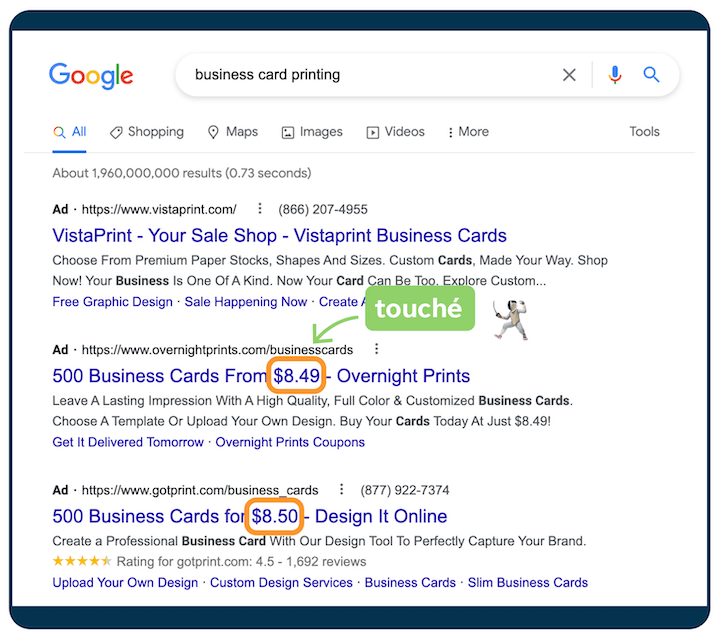
Do some sleuthing, too. Find out which keywords are most important to your competitors. If you know this you can attack them head-on for those keywords, or find weak spots (keywords they’re not focused on) and capture those clicks.
7. Master your bidding strategy
This guide focuses on all of the things you can do to compete in Google Ads without raising your bids. But that doesn’t mean you don’t need to have a solid bidding strategy to begin with. You can also adjust your bids so that you’re spending more in one area but less in anotherHere’s how to achieve that:
- Choose the right bidding strategy: Your bidding strategy tells Google how to spend your budget according to what you’re trying to achieve—maybe you want as many clicks as possible. Or maybe conversions. Or maybe you don’t want to exceed a particular cost per lead. Use our guide to all 10 bidding strategies in Google Ads to determine the right one for you.
- Try bid stacking: Despite Google harping on advertisers to “upgrade” to broad match with Smart Bidding, and even recently releasing a beta test to disable match types at the campaign level altogether to do this, we don’t recommend doing this. There are benefits to targeting multiple match types for the same keyword, and you may even want to use bid stacking to adjust bids based on match type.
- Try other bid adjustments: If you’re using a manual bidding strategy, you can adjust your bids according to location, device, performance, and more. If you’re using a Smart Bidding strategy, Google will adjust your bids for you, but you should still test out and see how different targets and minimums and maximums impact your performance.
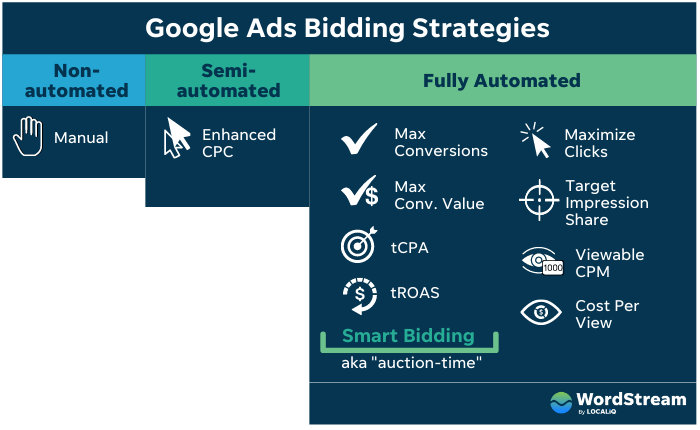
8. Use the tools available to you
Between the reports and features within the Google Ads interface as well as the tools and templates from others, you have an arsenal of resources at your disposal to help you compete for clicks. We’ve got a handy roundup of free Google Ads tools you can check out, but here are the ones available to you from us:
- Free Google Ads Grader: This tool will audit your Google Ads account in seconds and generate an easy-to-read, actionable report on how to improve your Quality Score, plug wasted spend, increase your impression share, and more.
- Free responsive search ad copy template: Coordinating multiple headlines and descriptions while also following responsive search ad best practices is a headache. Use our template to come up with the perfect combinations to capture clicks.
- Free Keyword Tool: Use this to uncover keywords to target in your campaigns and themes for your ad groups.
- PPC University: Our free learning hub offers articles and PDF guides written by experts and PPC influencers to help advertisers get the most out of their budget—from beginners to advanced practitioners.
Try the Free Google Ads Grader
Start competing in Google Ads
Now you’ve got the tips and tools you need to take down your competition in Google Ads—without toppling over your budget. Start with your Quality Score to build a strong foundation—which means focusing on great ad copy, properly themed ad groups, and optimized landing pages. Build on that with bid adjustments and keyword optimization, and then top it off with more specific competitor targeting. Use the free tools to make it all easier and you’ll be taking the lead (and generating leads (and sales)) in no time.
To recap, here are the eight strategies to compete in Google Ads:
- Understand the power of Quality Score
- Increase your click-through rate
- Improve your ad relevance
- Perfect your landing page experience
- Optimize your keywords
- Master your bidding strategy
- Examine your competition
- Use the tools available to you


